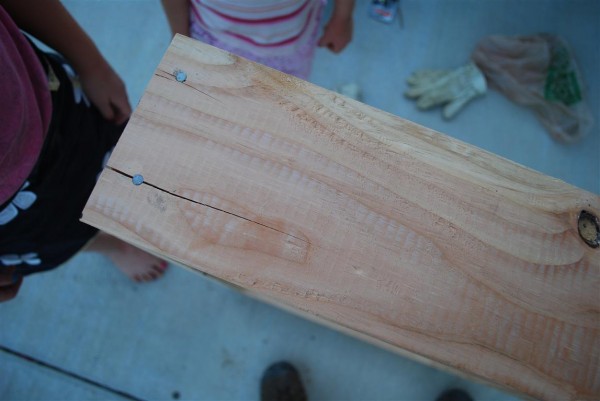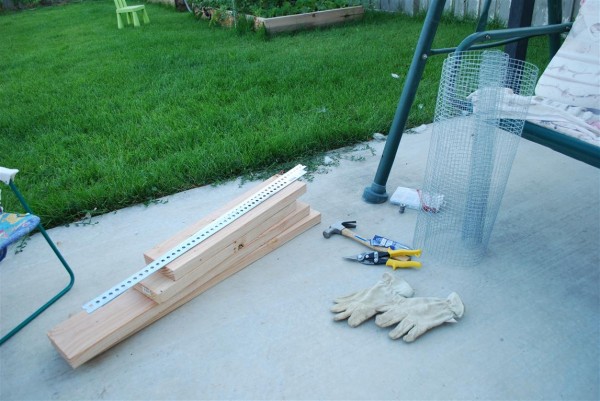The Importance of Visual Communication, or How to Build a Dirt Sifter
Recently due to flooding in my window wells, I had to dig the wells deeper. I piled up the dirt and rocks around the outside, and then realized I needed to sift the dirt from the rocks because I wanted to put the rocks back in, but move the dirt elsewhere in my yard to re-slope it. To sift the dirt from the rocks, I needed a dirt sifter, also called a gravel sifter. I thought I could simply buy one at Home Depot, but they do not sell them. You have to make one yourself.
I searched online to find instructions to build a dirt sifter. There are plenty of sites, with no one single method for building a dirt sifter. For the most part, it involves a rectangular wood box with a wire mesh bottom. That sounds simple enough, but as I walked through Home Depot looking for these parts, I had many questions. What size should the box be? How spacious should the mesh be? Would the dirt sifter fit snugly on my wheelbarrow or slide off? Would I shake it in my hands? Would I roll it somehow? If I rolled it, did the sifter need wheels? How strong did I need to attach the wire mesh to the wood? And so on.
I did some research online to figure out how to build a dirt sifter. One guy had a sweet looking roller device on his dirt sifter, but no real instructions on how to build what he's showing. Another site had one incredible diagram but not much else. Others failed to provide any visuals whatsoever.
It's not enough to build a box with a mesh bottom. You have to understand exactly how you'll be using it to sift the dirt. Shaking it manually? Using a trowel in a wheelbarrow? Somehow rolling it? If you're shaking it in hand, you better have a plan for catching the dirt, and the whole box should be small and light. But if you're catching it in a wheelbarrow, it needs to fit over the wheelbarrow, so it needs to be larger.
It wasn't until I found the explanation on this site that I began to understand exactly how to build the dirt sifter. The explanation is full of photos for each step of the way. The author doesn't assume much at all, and he even provides tips such as the following:
Nails or screws driven near the ends of a board usually cause the wood to split. Pre-drilling the screw holes will help prevent splitting.
I wasn't born with innate handyman talent, so I needed all the info I could get. After buying the necessary resources and tools, I gathered them up in my backyard.
I started screwing the box together. It seemed pretty easy at first. I drilled holes just like the instructions recommended.

But then my wireless drill's battery wore down, and I grew impatient, so I started to pound a nail in there instead. Ooops, the wood split.

I had to discard that piece of wood and use another scrap that I had a lying around the garage.
I attached the wire mesh to the wood using an metal strip I found at Home Depot. It was all pretty simple, but I was still wondering just how I would shake a box full of rocks and dirt.
Fortunately, the dirt sifter fit easily on the top of my wheelbarrow, and I could use my hand (with glove on) to sift the dirt. Here's a short video showing how the dirt sifter works.
After watching this three minute video, doesn't it answer all the questions of sifter mechanics that I raised earlier? Would a textual explanation be adequate or nearly as appealing to watch as the video? In my video above, you see exactly how the dirt sifter works -- not so much the construction, but the mechanics of use.
I find myself moving more and more away from text when it comes to tech comm. While text is a good foundation for other materials, text simply fails to communicate and engage like visuals do. With a visual (whether an image or a video), you see so many details that you can't convey briefly with text.
Case in point, I often help users on the phone with a specific application at work. I can listen to them describe what they're doing, but I almost always prefer to share screens and watch them go through the process. When I do that, I can quickly spot what they're doing wrong. Sometimes I see that the content they're working with is copied over from Microsoft Word, or I see that they're using an unsupported browser, or I see that they really are doing everything right and the system just has a bug in it. Visual communication is faster and more effective.
The visual communication doesn't need to be professional grade. I've been making quick WordPress screencasts that take me about 5 minutes from start to finish (including the upload to Youtube), and no one has complained about the quality. I also often make customized screencast tutorials for clients. They love them. It clarifies things in so many ways, and it's easier than writing instructions out by hand.
Text, by contrast, is tedious, cumbersome, confusing, and fails to engage the user. Text still has its place, but it's more of a supporting actor than a lead role.
About Tom Johnson

I'm an API technical writer based in the Seattle area. On this blog, I write about topics related to technical writing and communication — such as software documentation, API documentation, AI, information architecture, content strategy, writing processes, plain language, tech comm careers, and more. Check out my API documentation course if you're looking for more info about documenting APIs. Or see my posts on AI and AI course section for more on the latest in AI and tech comm.
If you're a technical writer and want to keep on top of the latest trends in the tech comm, be sure to subscribe to email updates below. You can also learn more about me or contact me. Finally, note that the opinions I express on my blog are my own points of view, not that of my employer.


